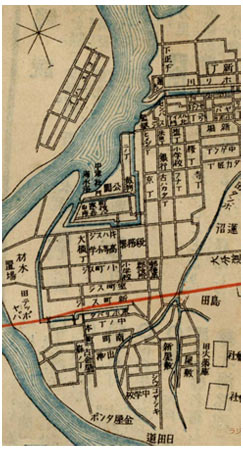One thing you don’t generally think of a lot is addresses and how they work, or how easy it is to find your friend’s house when he lives on 123 Main Street — just drive down the street and watch the numbers scroll by. Japanese addresses are a lot harder to deal with, based on an archaic system of dividing land into ever smaller arbitrary units. A Japanese address will generally contain a prefecture, a city, a “town” within that city, and a complex number like 3-25-10 that has little to do with the numbers around it. Finding a certain location using only this information is virtually impossible, and it’s a requirement that any printed advertisement feature a small map indicating how to get to the shop if they want any customers to visit. For added fun, streets are seldom named, meaning you have to memorize how to get places abstractly, like “turn left at the beauty shop, then right at the pachinko parlor.” South Korea has a similarly confusing system which they inherited from Japan, but now they’re doing something about it: a great remapping of the entire country, with Western style street names and with sequential house numbers. It’s an amazing undertaking, and I hope it goes well for them.

Japanese addresses are archaic and confusing.















